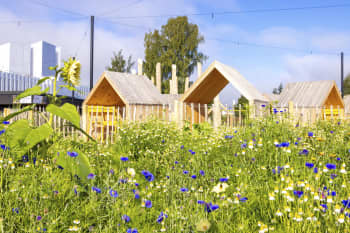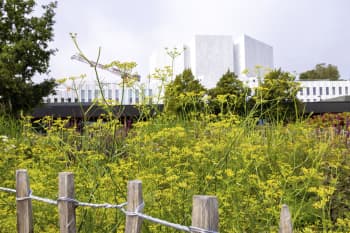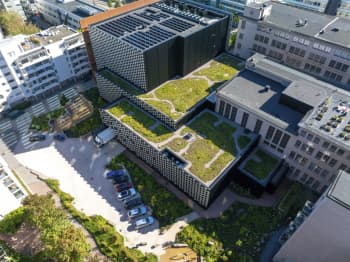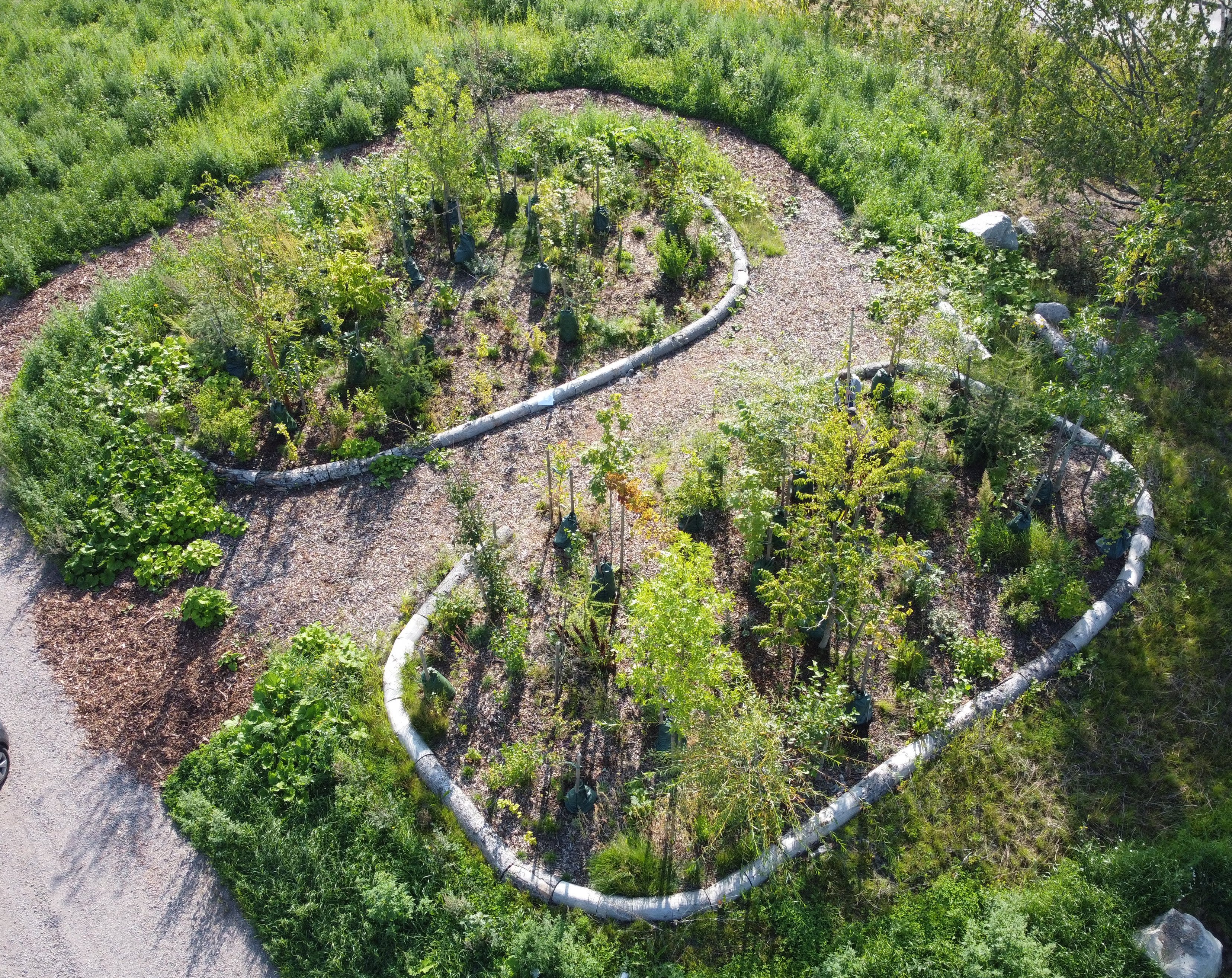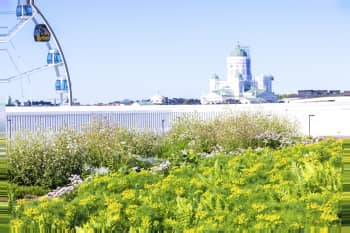Urban greenery is critical infrastructure
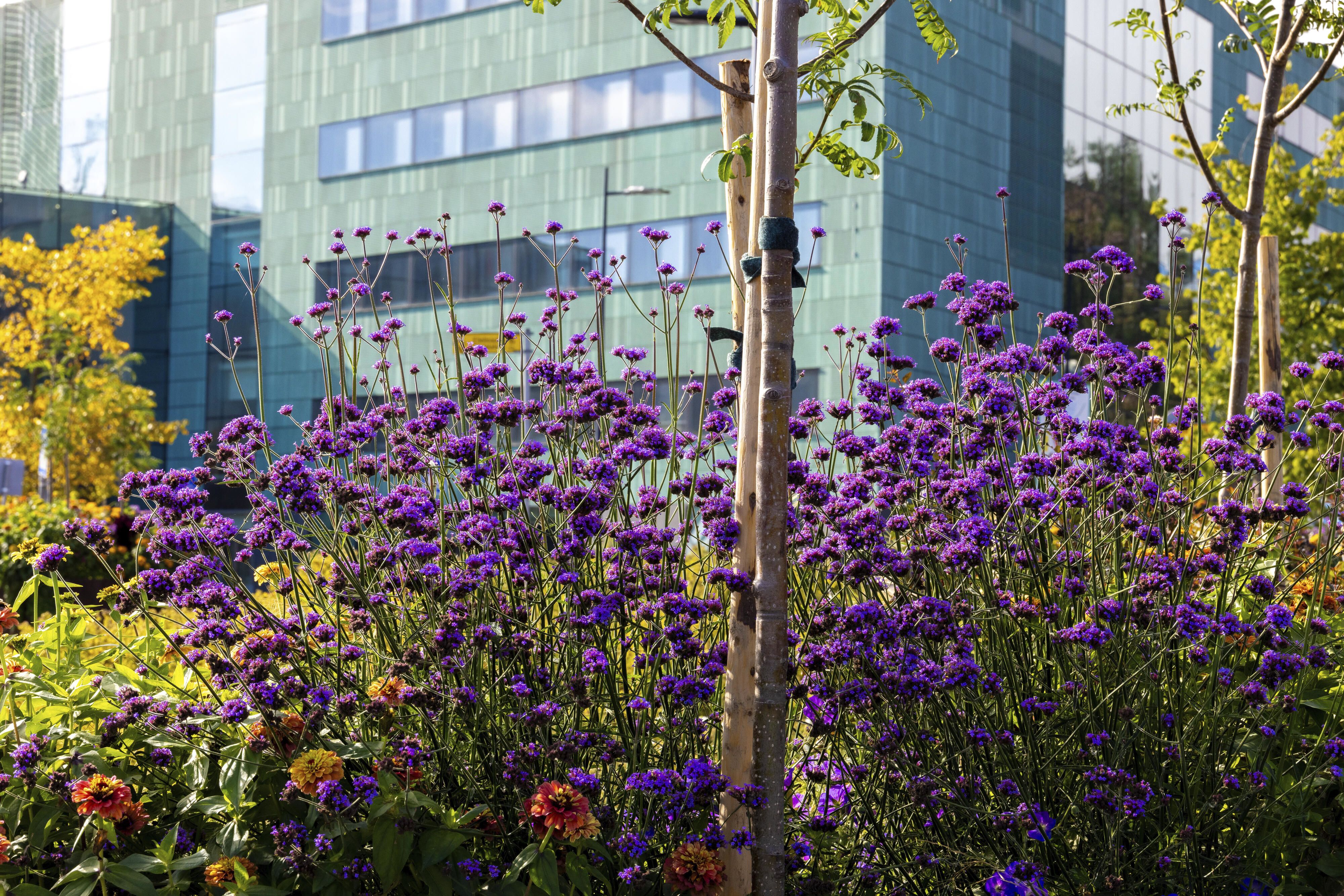
Urban greening plays a crucial role in building a climate-resilient, biodiverse and prosperous city. Urban green spaces, streetscapes and courtyards are not just "decoration", but instead critical infrastructure that provides answers to many societal challenges. Their necessity can be compared to other systems, such as the transport network or municipal infrastructure.
Are cities facing the impossible? At the same time, they should mitigate the climate crisis and adapt to its extremes, safeguard nature's biodiversity, maintain and develop community services and improve people's health and wellbeing. The traditional approach would be to think about each problem individually and make changes to existing, often technical, systems. However, challenges of this scale and complexity cannot be tackled from too narrow a perspective, as fixing one problem can make another worse. So what kind of solutions should cities turn to?
Urban design solutions to environmental crises
In nature, solving many problems at once and adapting to setbacks large and small is commonplace. It is therefore worth looking towards 'nature-based solutions' — ways of using and being inspired by nature in a sustainable way.
"When facing big challenges, the co-benefits of urban nature should be taken seriously. It is possible to deliver multiple benefits and address multiple societal challenges at the same time," says Ranja Hautamäki, Professor of Landscape Architecture. Ranja Hautamäki is deputy director of the multidisciplinary CO-CARBON research project. The key message of Co-Carbon is that urban greening is an important part of the solution palette. "Urban greening is at the heart of many simultaneous solutions."
For example, let's have a look at a city's climate resilience. A dense, hard-surfaced city cannot handle stormwater runoff from heavy rainfall. Instead, more vegetated and permeable surfaces can help to control stormwater flooding. At the same time, more green space will help to alleviate heat-related problems, as trees will provide shade and even out temperatures. Furthermore, greening creates carbon sinks and safeguards biodiversity, as well as provides habitats for different species.
The Co-Carbon project aims to raise awareness especially about carbon sequestration in urban greening. Ranja Hautamäki says: "It is typical that the carbon sink debate focuses only on forests. However, measurements and modelling by the University of Helsinki and the Finnish Meteorological Institute show that urban greening can offset up to 7% of urban carbon emissions in Helsinki. A little less than half of this is made up of urban forests but the rest is other greenery: parks, yards, street plantings. Taking into account not only the carbon sinks but also the other benefits of urban greening, such as climate adaptation and combating habitat loss, it is reasonable to say that urban greening has a role to play in both the climate and nature work of municipalities. This is the message we want to take to decision-makers."
The idea of urban greenery as a "nice and pretty decoration" is therefore wrong. On the contrary, urban greening is a major strategic issue in urban development.
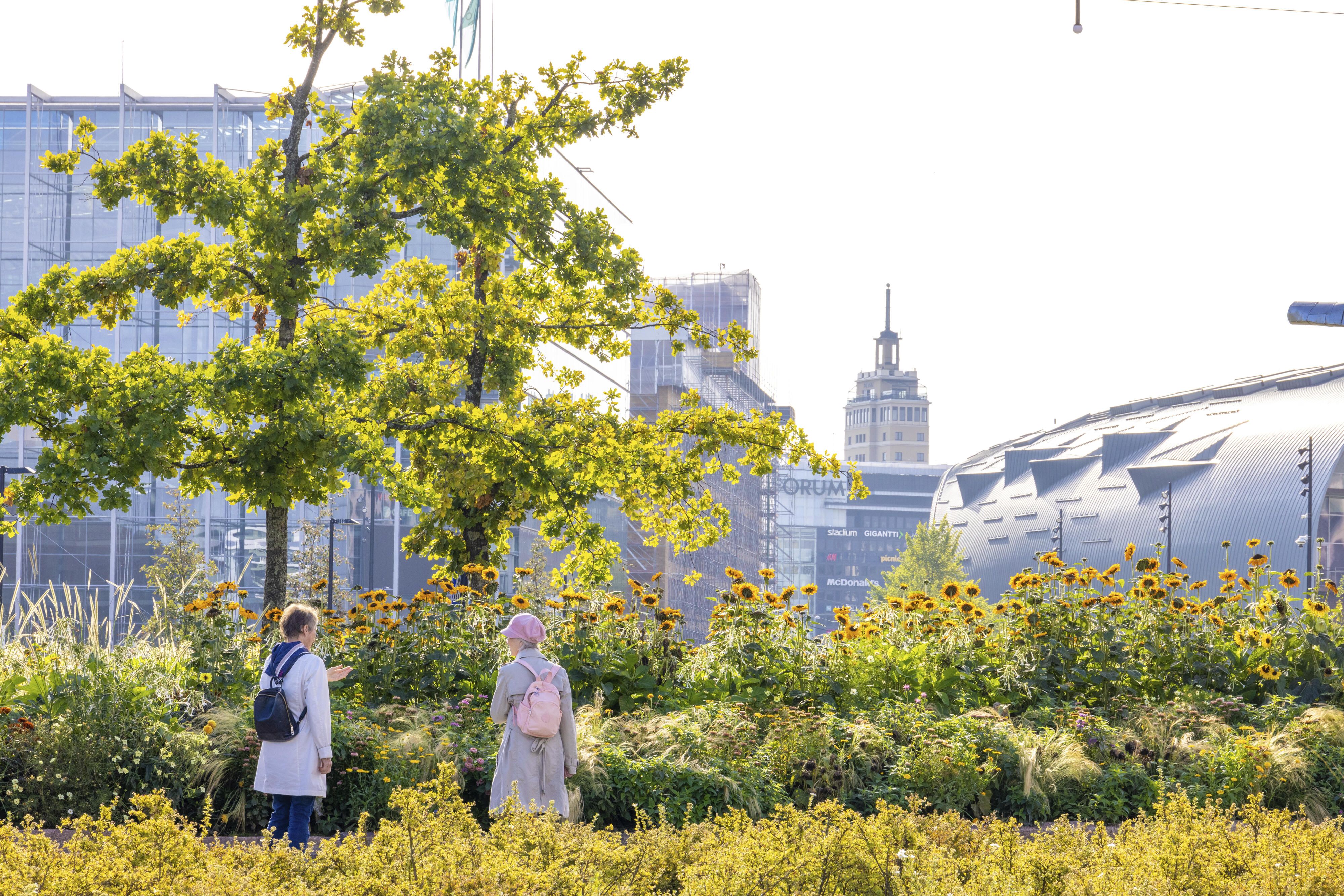
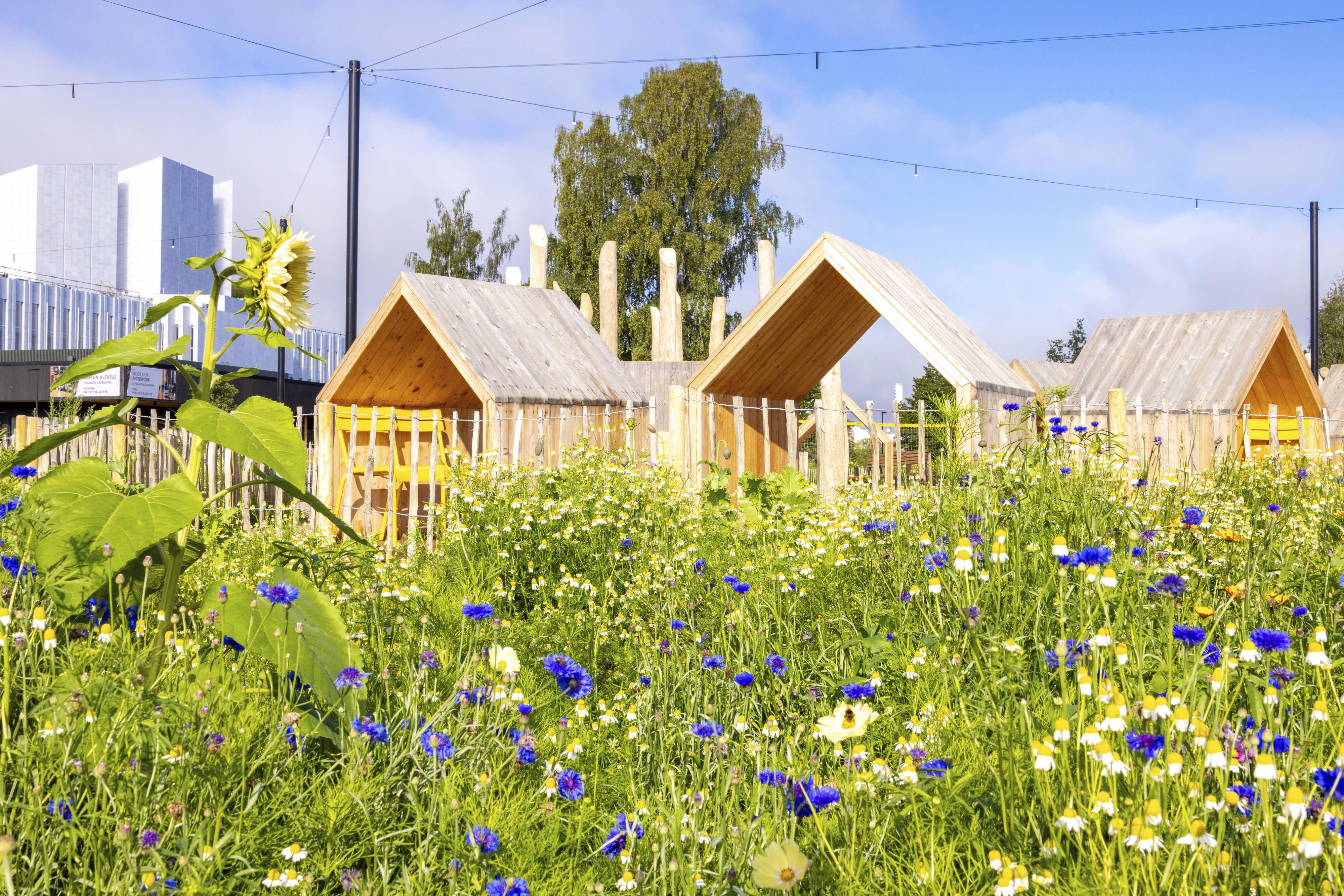

Greening all neighbourhoods
Urban densification, the compact city, is seen as a sustainable way to build for the climate crisis — it reduces energy demand and mobility-related emissions. However, the downside of a compact city is the pressure to plan and build on green urban areas. In Helsinki, for example, large-scale construction is reducing the amount of green space and increasing the pressure to use existing green spaces. So how can the climate benefits of urban nature, as well as biodiversity and social values, be maintained in a densely built environment?
"Densification is based on the idea of preserving large green areas outside the city, but there should also be enough green space within the dense urban structure," says Ranja Hautamäki.
"Urban green design should be part of the planning process for new neighbourhoods from the very beginning. We can't do with parks alone — courtyards and streets are equally important. This means, for example, that parking solutions as well as adequate space for vegetation are part of the equation. There are many different needs for urban space, and urban planning is always a question of coordination.
"It is challenging to retrofit urban greening — although on the other hand, in Paris, for example, this is exactly what is being done. In big cities, sufficient canopy cover is often the instrumentation to be monitored: this means adding trees to the neighbourhoods with the least trees. Although Helsinki as a whole is a green city, the amount of tree cover is not evenly distributed here either: canopy cover varies between 4 and 65% in different parts of the city, so we have very green areas and very densely built-up areas with very few trees."
According to Hautamäki, all citizens should have equal access to local greenery. A sufficient amount of vegetation ensures climate benefits. In addition, within 300 metres of every home there should be a large, diverse green space — in all parts of the city.
The Co-Carbon project is also challenging the perception of what urban nature should look like. The best option is not always a tidy lawn that needs to be mowed or raked clean of leaves. Instead, a multi-layered, wilder urban landscape effectively delivers both climate and biodiversity benefits. 'Meadowing' is therefore one way to deliver more nature benefits in a dense city.

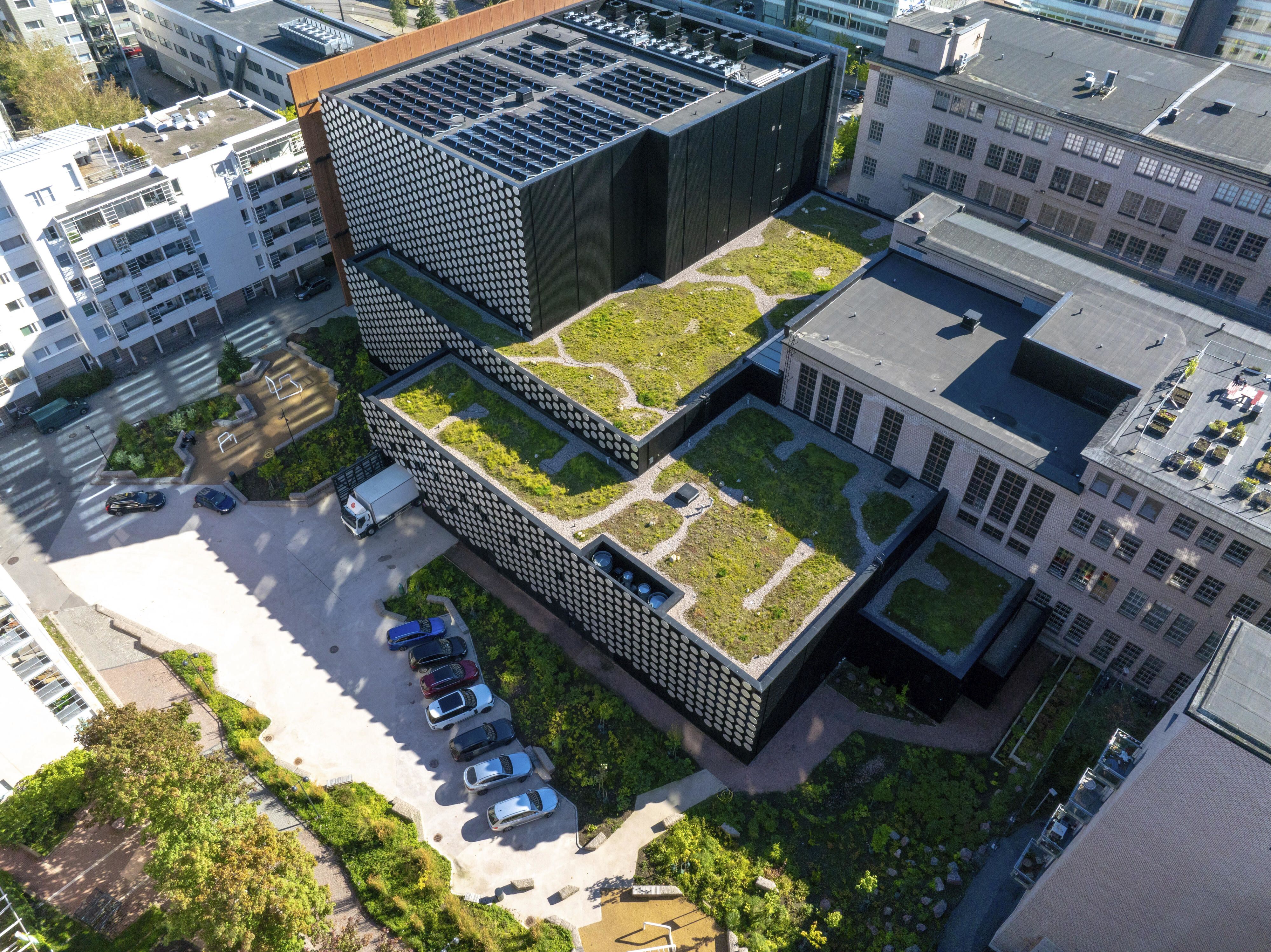
Hotel Scandic Grand Central. Photo: Caroline Moinel
Hotel Scandic Grand Central. Photo: Caroline Moinel
Hotel Scandic Grand Central. Photo: Caroline Moinel
Hotel Scandic Grand Central. Photo: Caroline Moinel
Landscape architects at the heart of social impact
Co-Carbon is a truly multidisciplinary research project, where experts from different disciplines are exploring urban green issues from their own perspectives, learning from each other and gaining insights. Natural scientists measure and model the carbon flow of urban vegetation while social scientists survey residents' perceptions of, for example, carbon-smart practices. The role of Aalto University's landscape architecture in the project is to act as a bridge between research and practice and a link between different disciplines.
"We are at the heart of social impact," says Ranja Hautamäki. "We put research into practice: as urban planning, green space design and greenery management. We think about what kind of guidance is necessary and what kind of changes are needed in the planning system."
The role is a natural one, as all the landscape architecture researchers on the project have their own practices in design offices at the same time. This helps to maintain a good feel for the application of research knowledge while encouraging experimenting and 'bottom-up' learning.
Tiny carbon forest in Kerava. Photo: Vesa Vuorinen
Tiny carbon forest in Kerava. Photo: Vesa Vuorinen
For example, PhD researcher Mari Ariluoma is developing a carbon factor tool for the already existing green factor tool that guides the greening of yards. The new tool can be used to assess the carbon sink potential of yards. PhD researcher Caroline Moinel is developing life cycle assessment methodology for landscaping; these kinds of tools are currently severely lacking. The research team is also testing new landscaping practices. It has planted a 'tiny carbon forest', a small, urban micro-forest in Kerava city. It could potentially provide the same kinds of benefits as large forests, such as carbon sequestration and biodiversity values, but just in a smaller scale. This is being demonstrated in Anna Pursiainen's thesis.
Learnings from the various experiments will be taken to a systemic level, through regulatory influence. "We are trying to influence urban planning practices and also legislation. Our partners are cities, expert organisations and businesses. At the moment, for example, we are influencing the Land Use Act and the National Restoration Plan."
Ranja Hautamäki says: "The EU Nature Restoration Law has entered into force and we are now in the process of drawing up a national restoration plan. The Co-Carbon project is interested in the articles that govern urban ecosystems. They talk a lot about the quantity of urban greenery, but we want to highlight the quality, which is really important. For example, a hectare of grass is not the same as a hectare of biodiverse forest."
Researchers and artists working with the same material
One of the objectives of the Co-Carbon project is to raise public awareness of the benefits of urban nature and to influence people's attitudes. This will accelerate the necessary change and facilitate adaptation. Making research understandable and accessible often requires unconventional means. This is why the project's researchers have also worked with artists.
When an artist studies, for example, environmental problems, the aim is not really to solve them. Rather, the artist-researcher is asking good questions and, at best, opening up new horizons.
In January 2024, the Lux Helsinki light art festival showcased the work Lungs by media artist and Aalto doctoral researcher Teemu Lehmusruusu and media artist Roberto Fusco. It visualises how carbon flows in the "lungs" of Helsinki, i.e. its green spaces. In the experimental animation, laser scanning data and carbon flow data from researchers at the University of Helsinki's Institute for Atmospheric and Earth System Research INAR were transformed into a moving map. (Laser scanning is a method of obtaining precise, three-dimensional information from the terrain.)
The work made visible the usually invisible events that are constantly present in urban space: carbon exchange and coalescence, the functioning of ecosystems and their importance for the city. In particular, Lungs depicted those places in the urban landscape where many important values — high carbon sequestration, biodiversity values and significant social values — are concentrated.
Ranja Hautamäki would also like to see significantly more of these valuable urban nature "hotspots" in our cities. "Co-Carbon's research confirms that urban parks, meadows, yards and street plantings really do matter in terms of carbon sequestration, biodiversity and wellbeing. These results open up new opportunities for landscape architects and other designers: how do we design carbon-wise urban green spaces and enhance their co-benefits?"
CO-CARBON is a multidisciplinary research project (2020-2026) funded by the The Strategic Research Council (SRC) of the Academy of Finland. The project will measure and model the carbon sequestration capacity of urban greening and create solutions for the design, implementation and maintenance of carbon-wise urban greening. The consortium includes the University of Helsinki, Aalto University, the Finnish Meteorological Institute, HAMK and the University of Copenhagen, as well as numerous partners, including cities, companies and expert organisations.cocarbon.fi



